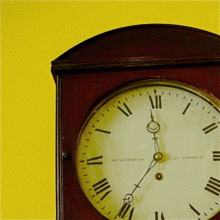
The Scottish Historic Buildings Trust (SHBT) has applied for Listed Building Consent to make important changes to the main Meeting Hall of the Glasite Meeting House at 33 Barony Street (Ref. 16/05648/LBC).
Designs by Lee Boyd Architects for the Category A structure, built in 1836, involve punching through most of the blind (blocked) windows on the east and south sides facing Albany Street Lane, and installing new, bespoke sash-and-case replacements to match originals elsewhere.
Inside, the box pews and pulpit would be removed permanently. Wood from the pews would be re-used to fill gaps in the panelling revealed once the pulpit had gone.
A new, slightly raised floor above the original raked one would provide a level surface and allow for disabled access without the need for intrusive railings.
Heating pipes under the new floor would be boxed in at skirting level around the perimeter walls.

Aches and pains
There have been no hires for the Meeting Hall since SHBT moved in two years ago (despite energetic marketing), and the popular Community Cinema here earlier in 2016 proved financially unviable.
Problems with the existing space include:
- more flexible alternatives nearby (e.g. The Mansfield Traquair Centre)
- inadequate daylight, ventilation, views out
- no step-free access
- too little space and/or mixed-use potential, thanks to pews
- sore knees, backs and bums, thanks to pews.
Bad for business
Former occupants of the building The Architectural Heritage Society of Scotland prepared a business plan for the building in 2011, which reported that its financial position was fragile. SHBT’s latest Design Statement summarises it thus:
annual outgoings [left] little or no operating surplus, any surplus at best being estimated at only 7% of income; and this did not cover the real operating and maintenance costs. This position has not changed under SHBT ownership and the building remains financially unviable in its current configuration.

Damned if you do, doomed if you don't
So, we are left with a classic built-heritage problem. Do we wish to retain a highly authentic 19th-century interior, with all the fascinating irritations which make it worth keeping, but without the money to do so? Or, do we wish to lose part of that building’s worth in order to secure what remains of its material future?
There’s no easy answer. Gifford et al.* describe the Glasite Meeting House’s interior as ‘unchanged, like a faded Victorian photograph’. That’s true, and that’s certainly part of the Meeting Hall’s charm … in small doses.
But the space is also oppressively gloomy, airless, and inconvenient. The spectral reek of boiled cabbage hangs in the air. The scritch-scratch of bored children inscribing uncushioned pews for hours on end can just be heard above the ticking of the clock …
Reluctantly, expectantly, this correspondent finds himself leaning towards change.—AM
* J. Gifford, C. McWilliam & D. Walker, The Buildings of Scotland: Edinburgh (London, 1984).
Got a view? Tell us at spurtle@hotmail.co.uk and @theSpurtle and Facebook
****************
 Patrick Hadfield It is a shame to change, but I think it does need to change. The description of the hall as gloomy is spot on! It would be good to get more community use out of it.
Patrick Hadfield It is a shame to change, but I think it does need to change. The description of the hall as gloomy is spot on! It would be good to get more community use out of it.
 Wayne Blanchard A heritage building needs to be alive with concern and use in order to survive. Given that various efforts to ensure the viability of this one have failed for the reasons stated, it appears that change is necessary. As stated elsewhere, a shame to make some of these changes, but the building itself and its role within the community are more important than the opportunity-stymying interior. I can sense that it's a moral issue. But the moral thing to do is resuscitate it rather than force it to suffer slow, horrible death.
Wayne Blanchard A heritage building needs to be alive with concern and use in order to survive. Given that various efforts to ensure the viability of this one have failed for the reasons stated, it appears that change is necessary. As stated elsewhere, a shame to make some of these changes, but the building itself and its role within the community are more important than the opportunity-stymying interior. I can sense that it's a moral issue. But the moral thing to do is resuscitate it rather than force it to suffer slow, horrible death.
 Euan Leitch I can vouch, as a previous partial custodian, no groups wanted to hire the hall because of the pews. And I always felt that the Bryce pulpit was a bit gaudy for a kale Kirk.
Euan Leitch I can vouch, as a previous partial custodian, no groups wanted to hire the hall because of the pews. And I always felt that the Bryce pulpit was a bit gaudy for a kale Kirk.
Broughton Spurtle Tassels. It's enough to drive a man wild.